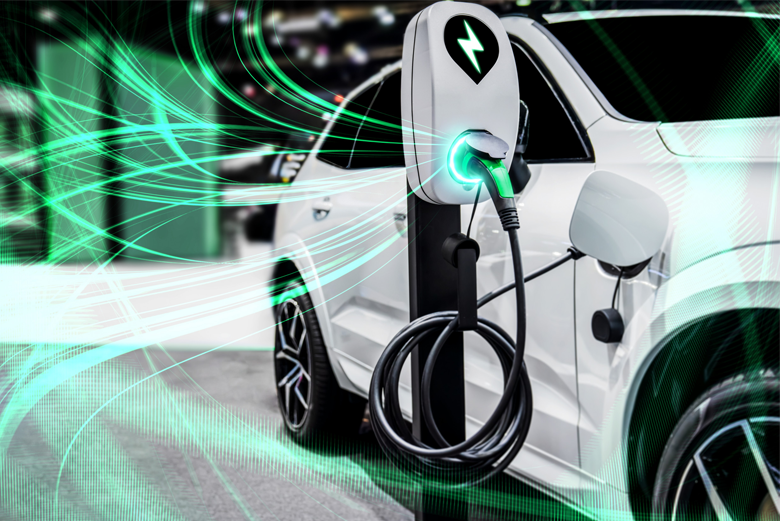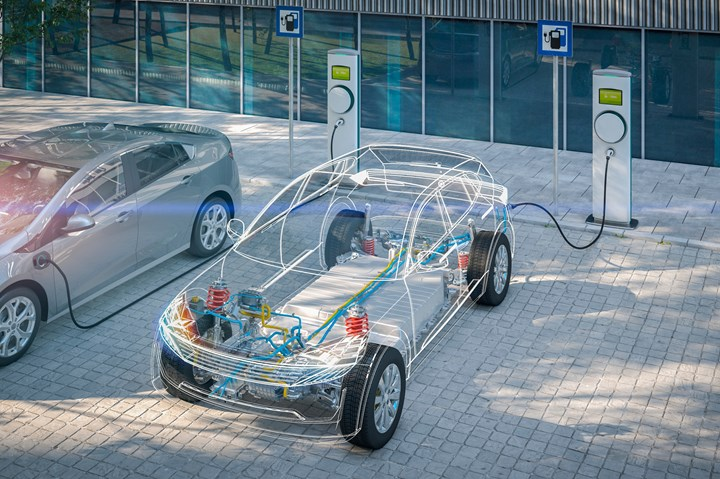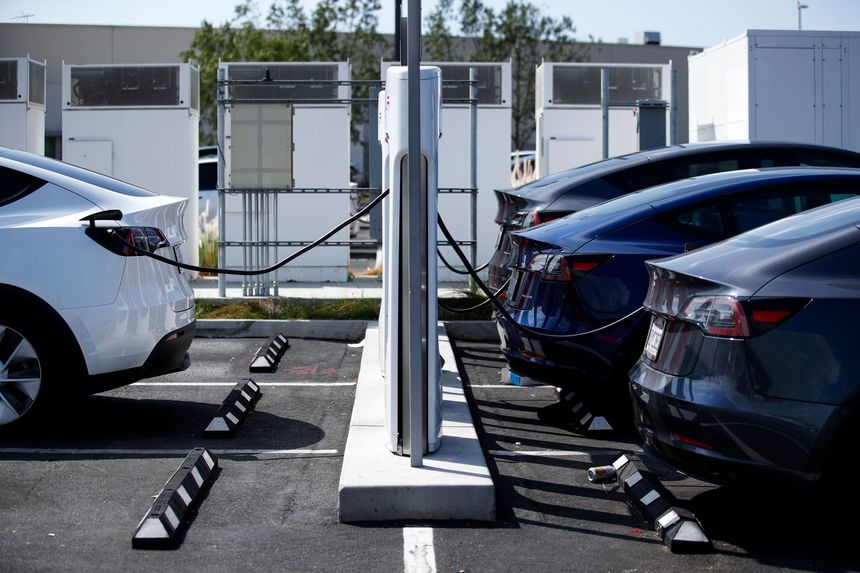As the number of connected vehicles grows, so too will in-vehicle services and products, including insurance. As the world is gearing up for a shift to allow environment-friendly electric vehicles to replace traditional ICE vehicles, the changing landscape presents both challenges and opportunities for the motor insurance market.
Considering the growing demand for EVs, all major insurance providers have already launched their EV-specific insurance products. As a result, the EV insurance market is expected to grow ten-fold from $49 billion in 2022 to $507 billion by 2033
The market is expected to grow at a CAGR of more than 19% during the forecast period. Falling EV prices, greater battery ranges, and sufficient charging infrastructure will contribute to the worldwide proliferation of EVs, growing the market for EV insurance in parallel.
National governments have been racing to incentivize consumer uptake of EVs while continually investing in the widespread rollout of the infrastructure needed for their success.

Higher claim costs due to expensive batteries, in-car technology, and limited repair networks are currently leading to more expensive premiums in EVs.
Other challenges that are impacting EV insurance premiums are charging infrastructure, immature supply chains, and global supply-side problems. These issues will subside over time, and the insurance premiums for EVs will resemble more closely to those of traditional ICE vehicles (see How to Reduce the Premium in Car Insurance).
On the other hand, government initiatives, legislation, greater battery ranges, falling EV prices, and increasing fuel prices are some of the opportunities that will lead to a rapid proliferation of EVs across the world.
Several key business areas across the insurance ecosystem are likely to be affected.

Distribution
As the number of connected vehicles grows, so too will in-vehicle services and products, including insurance. Insurance carriers are accustomed to selling and distributing bundled products to households indirectly through agencies and brokers, as well as directly through digital and “captive agent” channels, which requires significant investment in marketing and commissions. In fact, the top three property and casualty (P&C) insurance carriers collectively spent more than $5 billion on advertising in 2020.
Original equipment manufacturers (OEMs) have participated in this largely by acting as a lead-referral partner to a range of insurance providers.
But the growth of both connected vehicles and digital direct-to-consumer distribution of EVs holds out the prospect of a new channel through which consumers can directly buy insurance: the OEM.
Consumers will be able to buy auto insurance through a simplified or “no quote” purchase process when they buy their vehicle online. Access to customer data and direct-to-consumer vehicle sales will open up the auto insurance market to OEMs, allowing them to overcome longstanding operational challenges to their ability to capture recurring insurance revenue beyond the point of sale.
Product and pricing
The way auto insurance is underwritten and priced will also undergo a fundamental shift. With increasing connectivity, “pay how you drive” and usage-based insurance (UBI) will emerge as natural complements to EVs.
Gone will be mobile apps, aftermarket devices, and the actuarial challenges of surfacing underwriting insights after selection.
Instead, we will see insurance shifting with the help of the proliferation of connected data from self-reported, loss-correlated information about things such as marital status, gender, and age to independently observed, loss-causing information such as braking, acceleration, and speed—making the assessment and pricing of risk more accurate and convenient. Entities with access to these data will be the winners (see U.S. Auto Insurance Performance & Underwriting Results).
Moreover, the narrowing divide between personal and commercial auto insurance and the adoption of liability that moves between the human operator and the commercial manufacturer, contingent on usage, at the flip of a switch will spur the rollout of UBI.
The market will favor insurance providers that are able to navigate this shifting liability landscape and handle claims seamlessly across commercial- and personal-product exposures.

Insurance Claims
Today’s claims journeys are fragmented, complex, and manual. Processing claims requires significant input from customers, insurers, repair-shop networks, and rental providers, and it often relies on incomplete data from involved parties (see about Insurance Claims Management).
In the new future of mobility, insurers will be able to simplify, streamline, and automate the claims journey through connectivity and telematics technology such as cameras and sensors that provide real-time, accurate data.
Artificial intelligence (AI) will interpret these data, allowing for seamless claims handling and enabling the insurer to choose how and when to introduce a human touch.
The vehicle repair and rental segments could also undergo their own shift (opening up opportunities for OEMs) because traditional repair shops experience challenges fixing vehicles with highly sophisticated technology. Today, insurers influence vehicle repair and rental, so vehicles are repaired with aftermarket parts while the customer is provided with a rental vehicle from a competitor of an OEM.
In the future, because the OEM must accept liability for AV operations and because the connected vehicle will inform the OEM of accidents, the OEM is in a position to strongly influence the parts and rental vehicles the customer receives by making these the terms of continued AV operations.
The key trends that will shape the EV in insurance market in the coming months are technology trends, macroeconomic trends, and regulatory trends.
What are the market dynamics in the EV insurance market?
At present, the average price of EVs is greater than the average car price (as has been discussed) and over time, this price difference will diminish. EV prices have historically fallen quite rapidly and are anticipated to continue to decrease but at a slower rate going forward. The three primary regions for EV insurance will be Europe, North America, and Asia. While Tesla has a clear lead in EV production and sales, it lags a long way behind legacy automakers in its full production capacity.
Why Do Electric Cars Cost More to Insure?

When insurance companies set their rates, they’ll look at claims that have been paid for similar cars, among other things, and set their prices. For example, if your electric car model has a history of expensive and/or frequent claims, insurance rates for all owners of the model will generally be higher (see Insurance Coverage and Realising the Key Benefits of Self-Driving Vehicles).
Here are some reasons electric cars can cost more to insure:
- Replacement parts. The cost to repair and replace electric parts is often more expensive than their non-electric equivalents. Replacement parts for an EV are 2.7% more expensive than replacement parts for a gas-powered car, according to a report from CCC Intelligent Solutions, a provider of data to the automotive, collision repair and insurance industries.
- Electric vehicle batteries. The cost to replace a damaged battery in an EV can range between $5,000 to $15,000, according to GreenCars, a website that provides tools and resources for electric car shoppers.
- Repair shops. Facilities may charge more for repairs because of the specialized training required to fix EVs.
What are the different value chains in the EV insurance market?
The value chains in the EV in insurance market are product development, marketing and distribution, underwriting and risk profiling, claims management, and customer service.
Product Development
There is an increasing trend among leading insurers within the EV space to create standalone, EV-specific insurance policies. The added complications of the charging equipment, plus the different technological makeup of the vehicles, justifies this development.
Marketing and Distribution
Motor insurance is compulsory in almost all countries worldwide, and certainly in all nations at the forefront of EV production and uptake. Brokers are expected to continue their involvement in the provision of commercial motor insurance products, as a leading source of expertise and skill in navigating the more complex world of commercial markets. In some countries (notably the UK), aggregators continue to play an important role in encouraging competitive behavior between insurers in the personal line.
Underwriting and Risk Profiling
The underwriting and risk profiling segment of the insurance value chain is where EVs begin to show their differences from traditional vehicles. EVs retain an element of similarity to their ICE predecessors but have very different propulsion mechanisms. The typically slow-moving insurance industry must rapidly get to grips with new technologies and systems in vehicles that are increasing in popularity at almost unprecedented speeds. Moreover, as a relatively nascent market and technology, there is a significant level of heterogeneity between manufacturers, as each competing firm looks to navigate its own path to success.
Claims Management
As the EV market develops over the next decade, and EVs take up a greater proportion of the global motor parc, traditional mechanics will likely have to reskill as electrical engineers in order to maintain business levels as the underlying technology changes in a significant proportion of vehicles. Furthermore, third-party suppliers and manufacturers of auto parts will pivot towards EV parts, or the market itself will pivot towards a different group of suppliers, such as technology companies, rather than mechanical manufacturers for supplies.
Customer Service
The importance of customer service to the insurance value chain remains constant no matter the product. The process remains somewhat unchanged in the transition from ICE vehicles to EVs. Disputes over claims and liability will likely persist and claims values could rise due to the nature of EVs and the current costs of repairs.
Which are the leading companies that are associated with the EV insurance theme?
Some of the leading companies that are associated with the EV insurance theme are Allianz, Allstate, AVIVA, AXA, Direct Line, Ford, General Motors, Hyundai, Mercedes-Benz, Ping An Insurance, Stellantis, and Tesla.
……………………
AUTHORS: Tanguy Catlin – Senior Partner McKinsey; Russell Hensley – Partner in McKinsey’s Detroit office; Philipp Kampshoff – Senior Partner in McKinsey’s Houston office; Doug McElhaney – Partner in McKinsey’s Washington, DC, office








